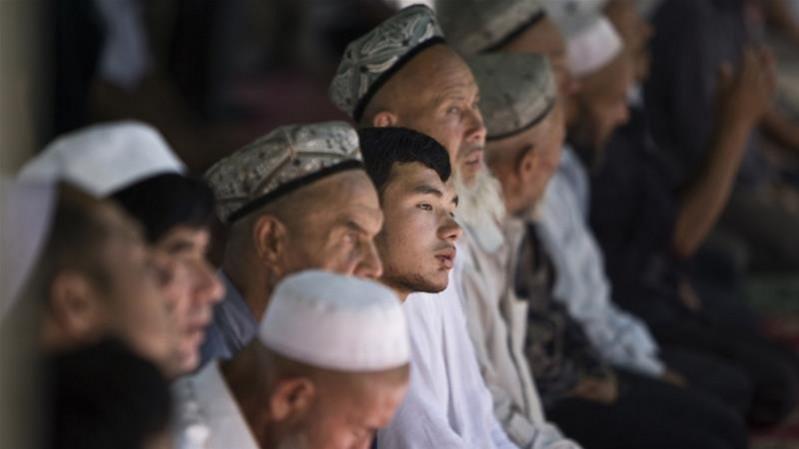While the attention of the world is increasingly focused on China's treatment of Muslim minorities in the northwest Xinjiang province, Beijing's restrictions on religion are spreading to other areas of the country – including a small community of Muslims settled thousands of kilometers to the south.
According to a South China Morning Post report, the latest moves by the Communist party includes banning of traditional dress in schools and government offices targeted the Utsuls, a little-known population of around 10,000 people based in Sanya, a city on the island province of Hainan, almost 12,000km (7,400 miles) from Xinjiang.
Communist Party documents also suggest the authorities will increase their surveillance of residents in Muslim neighborhoods to "resolve problems" and tighter restrictions on religious and "Arabic" architecture will be imposed.
An order banning the hijab from schools prompted protests from schools in Utsul neighbourhoods earlier this month, and pictures and videos circulating on Chinese social media showed a group of girls wearing headscarves reading from textbooks outside Tianya Utsul primary school while surrounded by police officers.
"The official line is that no ethnic minority can wear traditional garments on school grounds but other ethnic minorities [in Sanya] don't wear traditional garments in their daily life so it's makes no difference to them but to us the hijab is an integral part of our culture, if we take it off it's like stripping off our clothes," informed a Utsul community worker, on conditions of anonymity.
![China's flag [Representational Image] China flag](https://data1.ibtimes.co.in/en/full/644987/china-flag.jpg?h=450&l=50&t=40)
China's aggression towards Muslims
The Chinese government has frequently justified its treatment of Muslims in Xinjiang – where a UN report estimated that up to a million Uygurs and other minority groups are being held in detention centers – by pointing to previous terrorist attacks.
In 2015 the regional legislature passed a law banning the veil and "any other clothing that promotes extremist religious thought" in Urumqi, wording that could easily be applied to the hijab and extended it across Xinjiang two years later.
However, no reason was given for the ban on the traditional dress for Sanya's Utsuls. The community worker said that Utsul women working in the Sanya municipal government or the city's local Chinese Communist Party branch were also banned from wearing the hijab to the office late last year.
Utsuls working in the government or Communist Party bodies have been told only that the hijab is "disorderly".
But a Communist Party document from last year seen by the South China Morning Post and verified by the community worker suggests that the ban is the latest manifestation of a concerted campaign to "Sinicise" the handful of neighbourhoods where Utsuls live, eat, and pray.

As per the document, mosques will have to shrink in size when being rebuilt and buildings with "Arabic tendencies" will be banned. Arabic script must also be removed from shopfronts, along with Chinese characters such as "halal" and "Islamic".
Besides hijabs, the long skirts Utsul women traditionally wear are banned in schools and workplaces, and mosques must now have a Communist Party member sitting on their management committees for monitoring purposes.
Although the number of Utsuls is tiny compared with the Uygurs or Huis, who are both around 10 million strong, targeting them could still damage China's delicate relations with Southeast Asian countries, with whom they have strong cultural ties.
The Utsuls are descendants of the Cham people who used to inhabit the kingdom of Champa in modern-day Vietnam, where Islam became the dominant religion in the 17th century.
The Utsuls also have their own language, which is similar to Malay.














